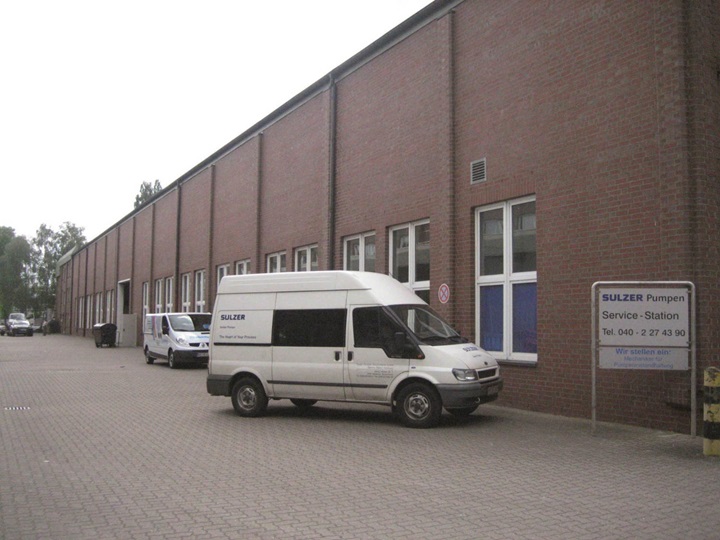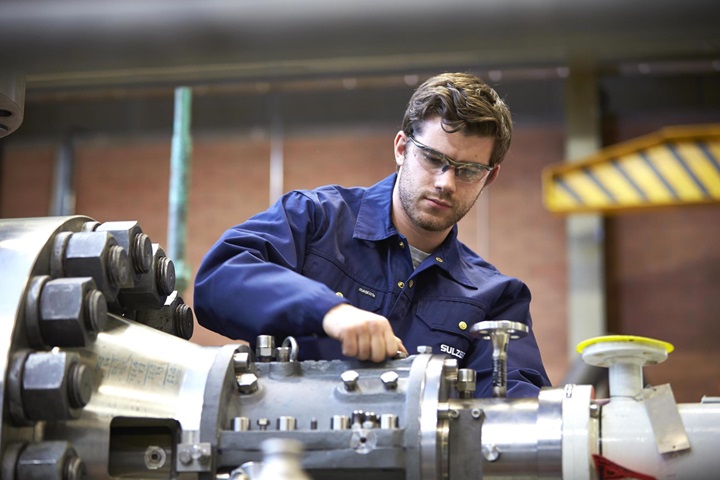Who are you going to call? Going beyond standard procedure
Rapid boiler feed pump repair and root cause analysis ensure power generation reliability
Finding fast repairs saves lost profits
The power plant in question has two boiler feed pumps that have been in service for approximately 10 years without any issue. However, recently, the operator noticed a problem with the mechanical seals and called in Sulzer. The company responded immediately with specialist field service personnel on site the next day. Further investigation revealed that the pump was seized as a result of not following the correct start-up and maintenance procedures.
While the boiler feed pump was out of action, productivity from the plant was significantly reduced. Although the lost output from the power station was covered by other sites, the profit loss ran into multi-millions of Euros for every week the pump was out for repair. Considering the current demand for energy across Europe, time was most certainly of the essence.
Claudia Calies, Service Center Manager for Sulzer
The first task was to explain to the plant management how the project would be delivered and the timeframe involved. Clearly, the pump was required back in service in the shortest time possible and we have to manage this expectation and provide an accurate timeline for the work to be completed.
The root cause bubbles up during inspection
With the power plant running two of these pumps, the operator was very keen to identify the root cause of the initial problem to enable any additional preventative measures to be taken. During the inspection, there was evidence that a steam bubble was present in the area around the balance piston, indicating a lack of cooling and lubrication, which led to a massive rise in temperature.
Some information that was missing during the initial investigation was that the plant suffered an unexpected shutdown two or three days before the pump failure took place. Once the reason for the shut-down was resolved, the pump was restarted, however, during this process a procedural issue was determined as the root cause of the subsequent pump failure, confirming the operational reliability of the pump.
As a result, having reinstated the pump and recommissioned it, Sulzer offered additional training for the plant personnel to try and prevent any reoccurrence in the future.
Stopping pump failure is standard procedure
In total, from the initial stoppage of the pump to recommissioning, the whole project was completed in nine and a half weeks. In contrast, the alternative would have been to order a new pump, but typically such a highly engineered asset would have considerably longer lead time. In an industry where downtime must be kept to an absolute minimum, Sulzer offers fast, responsive solutions that are backed by precision engineering and decades of experience.
Once the pump was reinstalled and operational, a review meeting was held to assess the performance of Sulzer’s team and the results achieved during the project. Although the operator had initially suspected that the pump might be at fault, it was concluded that the incorrect start-up procedure was responsible. The additional training and the checks that were carried out on the second pump have ensured that the scenario will not be repeated and that both pumps will continue to deliver reliable service.
Claudia concludes: “We regularly support the plant with annual shutdowns and communication between us is open and transparent, which is essential for a rewarding relationship.”
Following the successful completion of the project, the original rotor will be refurbished by Sulzer with a new balance piston being fitted along with refurbished impellers. This will enable the power plant to restock the spare part in case it should be needed in the future.
The project in numbers:
- 10-tonne pump
- Up to 12 personnel involved
- Time to complete repair: 9.5 weeks
- Profit lost during downtime: Multi-million euro per week





